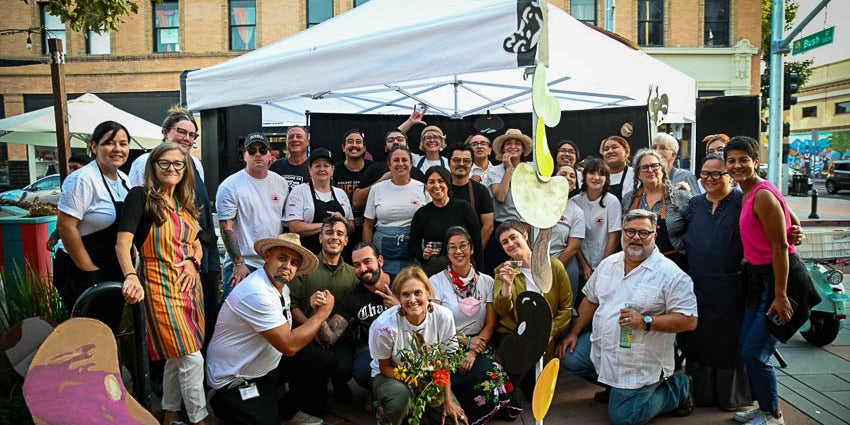





Cicerchia Bean
Free shipping on orders $50+
A rustic Italian-bred legume with an unusual, almost tooth-like shape, prized in Italy for its rich flavor.
In the 1980s, Steve lived in Italy and loved these odd, garbanzo-like legumes. He never could remember what they were called, and when he’d ask his Italian friends about them, he’d describe them as old, wrinkled teeth. “Oh! Cicerchie!” The inspiration for these was from nostalgia, but after cooking them, we all agreed they are well worth revisiting. It turns out that they are not so obscure with Italian cooks, and smart chefs stateside love them, as well.
April Bloomfield described them in the Los Angeles Times a few years ago: “Once they are cooked, they taste like a pea crossed with a chickpea. Even though they are dry, they have a certain freshness.”
Pluralization of Italian words can be confusing. Singular is cicerchia and plural is cicerchie, much like singular is biscotto and the plural is biscotti. You’d pronounce them "chee-CHAIR- key-ah."
There is some concern about the toxicity of cicerchie. Diets of large amounts and little else will be unhealthy over time. The same is true of fava beans and polenta, by the way. Eat a varied, nutritious diet and you will be happy and healthy. Do not eat nothing but cicerchie for months on end.
Cooking Suggestions
Italian soups, purees, and pasta e fagioli
From the Rancho Gordo Kitchen
Especially popular in Tuscany as "zuppa di cicerchie," a warm soup with lots of tomatoes and good olive oil. Pictured here with sauteed mushrooms and pasta for a delicious version of pasta e fagioli.
Cooking Instructions
Check beans for debris, and rinse thoroughly. In a large pot, sauté aromatic vegetables (onions, garlic, celery, carrot, etc.) in olive oil. Add beans and enough water to cover by about 2 inches. Bring to a full boil for 10 to 15 minutes. Reduce heat to a gentle simmer, using a lid to help regulate the heat, and gently cook until done, 1 to 3 hours. Salt when the beans start to soften. A pre-soak of 2 to 6 hours will lessen the cooking time.
Similar to
Chickling Pea, Chickling Vetch, or Grass Pea
Latin name
Lathyrus sativus
Country of origin
Italy
"If you want the best dried beans in North America, order them from Rancho Gordo."
Hugh Acheson
The Broad Fork (Clarkson Potter Books)


